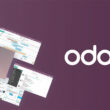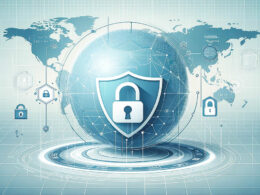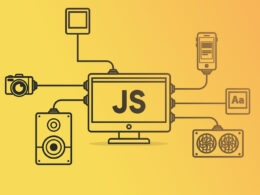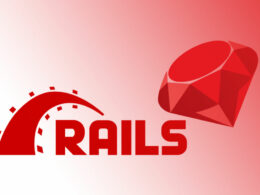Imagine a world where your coffee maker knows your ideal brewing time or your office dynamically adjusts the lighting and temperature for optimal comfort. This isn’t a scene from a futuristic novel—it’s today, enabled by the Internet of Things (IoT). In the ever-evolving terrain of technology, IoT stands as a revolutionary pillar, quietly orchestrating the symphony of connected devices.
Diving into the realm of IoT statistics, we uncover a treasure trove of data that underscores not just the current state but the pulsating potential of this digital ecosystem. Analysis of IoT market demographics, investment figures, and adoption rates across sectors like healthcare, manufacturing, and smart cities reveals a complex narrative of growth and challenges.
This article aims to distill the vast sea of numbers and trends into actionable insights. By its conclusion, you’ll grasp the scale of IoT’s impact on our world and the transformative power of real-time monitoring, edge computing, and AI-enhanced analytics.
Prepare to navigate through the latest connected devices figures, the surging waves of enterprise IoT projections, and the intricacies of cybersecurity in an interconnected age.
IoT Market Overview
Market Size and Growth
In the vast expanse of technological advancements, the IoT market is a titan, having reached $399.41 billion in 2022.
It’s marching forward, eyes on the prize, with projections set to catapult it to $486 billion by 2023’s end. This isn’t a leisurely stroll; it’s a sprint, with a compounded annual growth rate (CAGR) that’s an athlete’s dream at 12.7% from 2023-30.
Sector-Specific Insights
- Smart Home and Consumer Applications: Dive into any modern home, and you’re likely to bump into an IoT device. The smart home market, a bustling hub within IoT, tallied up 857 million devices shipped in 2022 alone. Though slightly down from its predecessors, the market’s pulse is strong, set to surge to 1.09 billion devices by 2027. In the US, nearly 69% of households have welcomed at least one smart device into their lives, a testament to IoT’s ever-expanding realm.
- Healthcare IoT Devices and Applications: The healthcare sector’s adoption of IoT is nothing short of a revolution. With an estimated market value of $534.3 billion by 2025, it’s clear IoT devices are not just gadgets but lifelines. In 2020, hospitals, clinics, and medical offices were home to approximately 646 million IoT devices, from vitals monitors to advanced imaging systems, painting a future where healthcare is not just about treatment but prevention and precision.
- Industrial IoT (IIoT) and Manufacturing: The Industrial Internet of Things (IIoT) stands as a colossus in the IoT landscape. It’s anticipated to reach a towering $106.1 billion by 2026, a beacon of automation and efficiency. With 40% of manufacturers diving into private 4G and 5G networks, the industry’s hunger for connectivity and data-driven decisions is insatiable.
- Agriculture IoT Innovations: The fields are talking, and IoT is the language. The agriculture sector, ripe for innovation, has embraced IoT to the tune of an expected market value growth from $12.75 billion in 2022 to $15.68 billion in 2023. This surge is powered by sensors and drones, meticulously monitoring crops, ensuring that every grain and leaf is accounted for.
- Energy and Construction Sector IoT Applications: The energy sector’s dance with IoT is a graceful one, expected to reach $75.3 billion by 2026. Meanwhile, construction, a relative newcomer to the IoT party, projects an investment reaching $16.8 billion by 2024. These numbers narrate a future where buildings not only rise from the ground but are interwoven with the digital world, optimizing energy use and ensuring safety through IoT’s watchful eyes.
IoT Device Connectivity
Key Technologies and Protocols
In the fabric of IoT, connectivity threads are diverse, each with its unique weave. Bluetooth Low Energy (BLE) and Cellular IoT, including the much-anticipated 5G, stand as pillars supporting the IoT universe.
These technologies are not just conduits of data; they are lifelines that empower devices to communicate, transforming static objects into intelligent beings that understand the language of bytes and bits.
IoT Device Ecosystem
- Smartphones as IoT Devices
The omnipresence of smartphones, with an astounding figure of 5.61 billion unique users as of Q1 2024, marks them as the most ubiquitous IoT devices.
They are the Swiss Army knives of the digital age, a single device with the power to control, communicate, and create within the IoT realm.
- Smart Cities and Environmental Monitoring
Diving deeper, smart cities emerge as a testament to IoT’s potential to reshape urban landscapes. They are not just cities but intelligent ecosystems that thrive on connectivity, where every sensor, light, and meter communicates to create a symphony of efficiency and sustainability.
The vision of smart cities, with 43% announced in North America, unveils a future where technology and urban life intertwine seamlessly.
- Healthcare Monitoring Devices
In healthcare, IoT is a silent guardian. With 646 million IoT devices in hospitals, clinics, and medical offices as of 2020, it’s clear the sector’s pulse beats through IoT.
These devices, from vitals monitors to advanced imaging systems, are not mere tools but bridges connecting patients to better health outcomes through the power of real-time data and remote care.
- Industrial Automation and Robotics
The industrial domain showcases IoT’s prowess in automation and robotics. It’s a realm where machines speak to each other, orchestrating production with minimal human intervention.
The anticipation of 9.2 billion internet-connected devices by 2029, nearly half using 5G, heralds an era where the efficiency of industrial processes reaches unprecedented heights.
IoT Security Landscape
Security Challenges
In the realm of IoT, security is not just a feature; it’s a cornerstone.
With the IoT security market reaching $3.35 billion in 2022 and projections set to soar to $13.36 billion by 2028, the numbers reveal a narrative of urgency and importance.
Yet, the path is fraught with hurdles. Malware attacks on IoT devices surged by 77% in the first half of 2022 alone, highlighting a battlefield where digital guardians and cyber adversaries clash.
IoT Security Solutions
Amid the turmoil, the silver lining emerges in the form of advanced security solutions. The deployment of these protective measures is akin to building a digital fortress around the treasures of data IoT devices hold dear. Yet, this fortress is only as strong as its weakest link.
More than 25% of all cyberattacks against businesses now involve IoT, painting a target on the backs of these interconnected devices.
Endpoint security, forecasted to reach over $29 billion by 2027, becomes the shield and sword in this ongoing battle.
The Impact of IoT on Business and Economy
Cost Savings and Efficiency Gains
In the digital tapestry that businesses weave, IoT emerges as a pivotal thread, intertwining with operations to spawn unprecedented efficiency and cost savings.
A staggering 93% of executives underscore the value IoT brings, far outweighing its risks. Imagine a world where 545 of IoT projects pivot on the axis of cost reduction.
The narrative is compelling: IoT is not just a tool but a transformative force, reshaping the contours of business operations with a keen eye on sustainability and thriftiness.
IoT in Smart Homes and Cities
Smart Home Devices and Usage Trends
The domain of smart homes is a testament to how deeply IoT has embedded itself into the fabric of daily living.
With 857 million smart home devices shipped in 2022, the landscape of home living is being redrawn, integrating technology into every nook.
The anticipation bubbles, forecasting 1.09 billion devices by 2027, revealing a trajectory steeped in connectivity and automation.
This surge is more than a trend; it’s a lifestyle revolution, where 69% of US households are already basking in the ease and efficiency that smart home devices offer.
Development of Smart Cities
Venture into the heart of any forward-thinking metropolis, and you’ll find IoT pulsating at its core.
Smart cities, with their veins of sensors and networks, are not just urban areas; they’re intelligent ecosystems.
These cities, led by pioneers like Shanghai, New York, Toronto, Seoul, and Shenzhen, are the avant-garde of urban development, leveraging IoT to optimize everything from traffic flow to energy consumption.
The narrative of smart cities unfolds in real-time, turning what was once fiction into functionality, where over one-fifth of all publicly announced IoT projects breathe life into this vision, particularly in North America, home to 43% of these futuristic endeavors.
The Role of IoT in Healthcare
Healthcare, a sector at the crossroads of human vulnerability and technological prowess, is undergoing a quiet revolution.
646 million IoT devices were already operational within hospitals, clinics, and medical offices by 2020. This isn’t just adoption; it’s a seismic shift toward a future where every heartbeat, every breath, can be monitored, analyzed, and acted upon in real-time.
The IoT healthcare market, brimming with potential, is projected to balloon to $534.3 billion by 2025. This staggering figure is a testament to how intertwined IoT has become with the very fabric of healthcare delivery.
IoT in Industrial Applications
The realm of the Industrial Internet of Things (IIoT) is not just an evolution; it’s a revolution.
With projections pointing to an industry that’s set to hit $106.1 billion by 2026, it’s clear we’re witnessing a paradigm shift.
This isn’t merely about machines talking to machines; it’s about creating ecosystems of efficiency and precision that redefine what it means to produce, manufacture, and innovate.
FAQ On Internet Of Things Statistics
How Rapidly is the IoT Market Growing?
In a nutshell, IoT market growth is not just steady; it’s skyrocketing. Analysts observe a compound annual growth rate that’s up there, with projections easily breaking through billions of devices. Essentially, more gadgets are getting chatty with each other year over year.
What Industries are Leading in IoT Adoption?
You’ve got the usual suspects leading the charge: healthcare, manufacturing, and transportation sectors are heavily invested. Healthcare’s leveraging it for patient monitoring, while manufacturing integrates IoT for predictive maintenance. Transport’s using it to make everything from supply chains to personal travel smarter.
How Many IoT Devices Are There Currently?
It’s like watching a population boom, really. Current counts breach the 10-billion mark. And with predictions pointing north, your toaster might just be next in line for a smart upgrade.
What’s the Projected Value of the IoT Industry?
Talking figures, we’re staring at a trillion-dollar horizon, give or take. The IoT market analysis spells a bounty with businesses and consumers collectively pushing the pedal on IoT investments.
How do IoT Statistics Relate to Consumer Behavior?
Consumers are flocking towards convenience and automation. IoT consumer behavior stats show us that smart homes and wearable technology are not just trends but lifestyle staples.
What is the Impact of IoT on Data Usage?
The spike in data usage is colossal, with IoT devices contributing a significant share. We’re talking zettabytes—yes, that’s a number with a lot of zeroes. IoT data usage reports illuminate the massive scale of information generated.
How is 5G Technology Influencing IoT Growth?
5G’s like a turbo booster for IoT. Its higher speeds and reliability are making real-time, ultra-responsive IoT applications a living reality, fueling unprecedented growth across the board.
Are There Significant Risks with IoT, Such as Security Concerns?
IoT security breaches stats flash red at times, reminding us that more connectivity brings increased risk. While the industry is dialing up on cybersecurity, it remains a challenge.
How is IoT Influencing Job Markets and Skills Demand?
IoT’s opening up new job fronts, particularly in software development, data analytics, and network security. The demand for professionals with knowledge in 5G, AI, and machine learning intertwined with IoT is on a steep incline.
What Does IoT Mean for Privacy and Personal Data?
Personal data has become a tradeable currency. IoT, while convenience personified, often walks a tightrope with privacy. Legislation like GDPR is stepping in, looking to tether back some control to the hands of the end-users.
Conclusion
In concluding our expedition through the vibrant landscape sketched by internet of things statistics, we indeed stand at the cusp of a digital renaissance. The IoT paradigm is rife with boundless potential, undeniably etching its utility across industries ranging from the intimate walls of smart homes to the sprawling expanse of smart manufacturing.
The raw digits — be they pertaining to connected devices or to edge computing invasions — narrate an ascending trajectory. Security still dances on a pinhead, with legislation like GDPR attempting to reel in the reigns on privacy concerns.
As 5G technology unfurls its wings, the sinews of IoT only grow more robust, cementing its place in a future where predictive maintenance may well become the norm, not the exception. Fields like healthcare and transportation continue to burgeon under the IoT spell, heralding a reality where every object has a story to tell, a pulse to share.
- Key Internet of Things Statistics You Must Know - April 9, 2024









